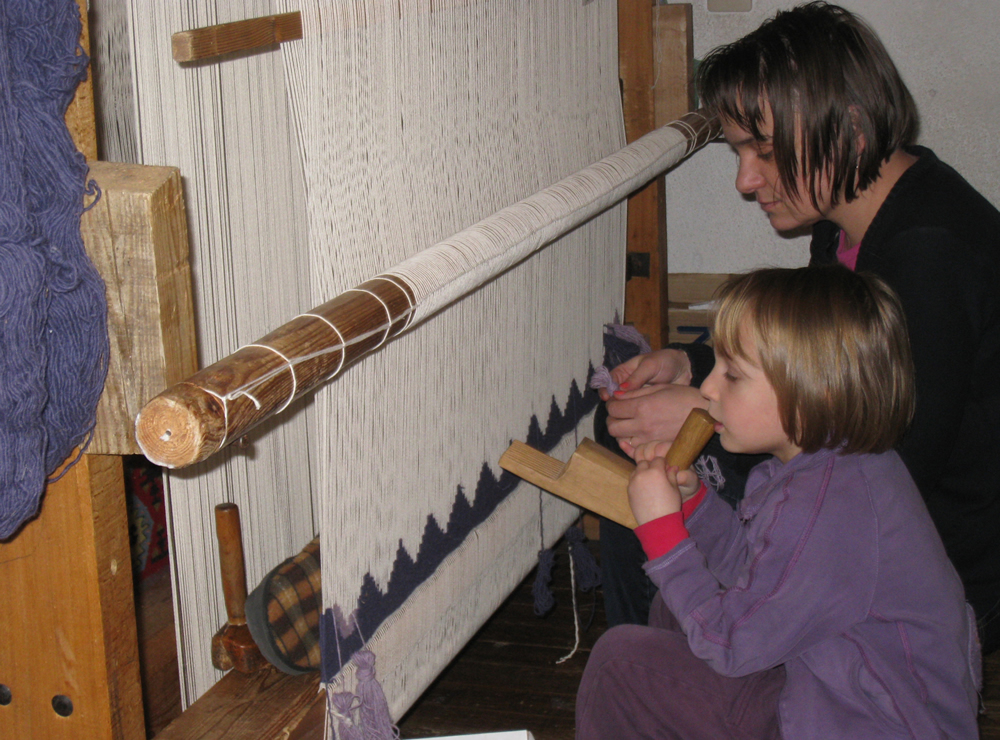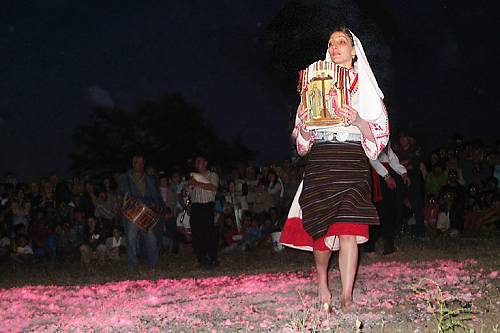Visoko is a traditional practice of multipart singing that is unique to the Bulgarian villages of Dolen and Satovcha in the Blagoevgrad region. There are three types of multipart songs typical of Visoko: low-pitched, high-pitched and a combination of the two. Low-pitched singing consists of sustained singing by two vocal parts. High-pitched singing also includes two vocal parts, but is characterized by repeated outcries from both voices, an octave above the basic tone. These outcries are followed by a downwards slide and a recitative uttering of the lyrics in the low register. The third type of Visoko song entails a combination of low-pitched and high-pitched singing, with all four vocal parts. Visoko lyrics typically evoke nature. In the past, visoko songs, also known as summer songs, were sung outdoors by women working in the fields. While hoeing or harvesting, a group of women called out Visoko songs from one field, and a second group replied from another. Today, the main performers of Visoko are women and girls in singing groups from community centres in the two villages. This high-pitched multipart singing is a key identity marker for the Dolen and Satovcha communities. It is a cherished tradition that distinguishes them from neighbouring villages.









